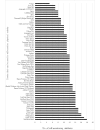Devices for Self-Monitoring Sedentary Time or Physical Activity: A Scoping Review
- PMID: 27145905
- PMCID: PMC4871995
- DOI: 10.2196/jmir.5373
Devices for Self-Monitoring Sedentary Time or Physical Activity: A Scoping Review
Abstract
Background: It is well documented that meeting the guideline levels (150 minutes per week) of moderate-to-vigorous physical activity (PA) is protective against chronic disease. Conversely, emerging evidence indicates the deleterious effects of prolonged sitting. Therefore, there is a need to change both behaviors. Self-monitoring of behavior is one of the most robust behavior-change techniques available. The growing number of technologies in the consumer electronics sector provides a unique opportunity for individuals to self-monitor their behavior.
Objective: The aim of this study is to review the characteristics and measurement properties of currently available self-monitoring devices for sedentary time and/or PA.
Methods: To identify technologies, four scientific databases were systematically searched using key terms related to behavior, measurement, and population. Articles published through October 2015 were identified. To identify technologies from the consumer electronic sector, systematic searches of three Internet search engines were also performed through to October 1, 2015.
Results: The initial database searches identified 46 devices and the Internet search engines identified 100 devices yielding a total of 146 technologies. Of these, 64 were further removed because they were currently unavailable for purchase or there was no evidence that they were designed for, had been used in, or could readily be modified for self-monitoring purposes. The remaining 82 technologies were included in this review (73 devices self-monitored PA, 9 devices self-monitored sedentary time). Of the 82 devices included, this review identified no published articles in which these devices were used for the purpose of self-monitoring PA and/or sedentary behavior; however, a number of technologies were found via Internet searches that matched the criteria for self-monitoring and provided immediate feedback on PA (ActiGraph Link, Microsoft Band, and Garmin Vivofit) and sedentary time (activPAL VT, the Lumo Back, and Darma).
Conclusions: There are a large number of devices that self-monitor PA; however, there is a greater need for the development of tools to self-monitor sedentary time. The novelty of these devices means they have yet to be used in behavior change interventions, although the growing field of wearable technology may facilitate this to change.
Keywords: activity monitor; feedback; measurement; physical activity; scoping review; sitting time.
Conflict of interest statement
Conflicts of Interest: None declared.
Figures






Similar articles
-
Efficacy and Effectiveness of Mobile Health Technologies for Facilitating Physical Activity in Adolescents: Scoping Review.JMIR Mhealth Uhealth. 2019 Feb 12;7(2):e11847. doi: 10.2196/11847. JMIR Mhealth Uhealth. 2019. PMID: 30747716 Free PMC article.
-
Comparison of Students' Physical Activity at Different Times and Establishment of a Regression Model for Smart Fitness Trackers.Sensors (Basel). 2025 Mar 11;25(6):1726. doi: 10.3390/s25061726. Sensors (Basel). 2025. PMID: 40292814 Free PMC article.
-
Maintenance of physical activity and sedentary behavior change, and physical activity and sedentary behavior change after an abridged intervention: Secondary outcomes from the ACTIVATE Trial.Cancer. 2019 Aug 15;125(16):2856-2860. doi: 10.1002/cncr.32142. Epub 2019 Apr 23. Cancer. 2019. PMID: 31012968 Clinical Trial.
-
A randomized controlled trial of a wearable technology-based intervention for increasing moderate to vigorous physical activity and reducing sedentary behavior in breast cancer survivors: The ACTIVATE Trial.Cancer. 2019 Aug 15;125(16):2846-2855. doi: 10.1002/cncr.32143. Epub 2019 Apr 23. Cancer. 2019. PMID: 31012970 Clinical Trial.
-
Digital technology for delivering and monitoring exercise programs for people with cystic fibrosis.Cochrane Database Syst Rev. 2023 Jun 9;6(6):CD014605. doi: 10.1002/14651858.CD014605.pub2. Cochrane Database Syst Rev. 2023. PMID: 37294546 Free PMC article. Review.
Cited by
-
The 24-Hour Activity Cycle: A New Paradigm for Physical Activity.Med Sci Sports Exerc. 2019 Mar;51(3):454-464. doi: 10.1249/MSS.0000000000001811. Med Sci Sports Exerc. 2019. PMID: 30339658 Free PMC article. Review.
-
The Role of Wearable Devices in Multiple Sclerosis.Mult Scler Int. 2018 Oct 10;2018:7627643. doi: 10.1155/2018/7627643. eCollection 2018. Mult Scler Int. 2018. PMID: 30405913 Free PMC article. Review.
-
Iterative four-phase development of a theory-based digital behaviour change intervention to reduce occupational sedentary behaviour.Digit Health. 2020 Mar 25;6:2055207620913410. doi: 10.1177/2055207620913410. eCollection 2020 Jan-Dec. Digit Health. 2020. PMID: 32257366 Free PMC article.
-
Using Fitness Trackers and Smartwatches to Measure Physical Activity in Research: Analysis of Consumer Wrist-Worn Wearables.J Med Internet Res. 2018 Mar 22;20(3):e110. doi: 10.2196/jmir.9157. J Med Internet Res. 2018. PMID: 29567635 Free PMC article.
-
Use of Wearable Activity-Monitoring Technologies to Promote Physical Activity in Cancer Survivors: Challenges and Opportunities for Improved Cancer Care.Int J Environ Res Public Health. 2023 Mar 8;20(6):4784. doi: 10.3390/ijerph20064784. Int J Environ Res Public Health. 2023. PMID: 36981693 Free PMC article. Review.
References
-
- Katzmarzyk PT, Mason C. The physical activity transition. J Phys Act Health. 2009 May;6(3):269–280. - PubMed
-
- World Health Organization . Global Recommendations on Physical Activity for Health. Geneva: World Health Organization; 2010. - PubMed
-
- Ogilvie D, Foster CE, Rothnie H, Cavill N, Hamilton V, Fitzsimons CF, Mutrie N, Scottish Physical Activity Research Collaboration Interventions to promote walking: systematic review. BMJ. 2007 Jun 9;334(7605):1204. doi: 10.1136/bmj.39198.722720.BE. http://www.bmj.com/cgi/pmidlookup?view=long&pmid=17540909 bmj.39198.722720.BE - DOI - PMC - PubMed
-
- Morris JN, Hardman AE. Walking to health. Sports Med. 1997 May;23(5):306–332. - PubMed
Publication types
MeSH terms
Grants and funding
LinkOut - more resources
Full Text Sources
Other Literature Sources
Medical

